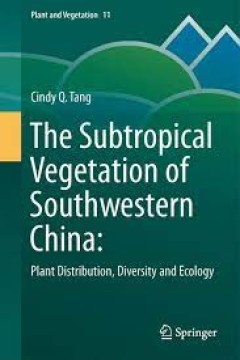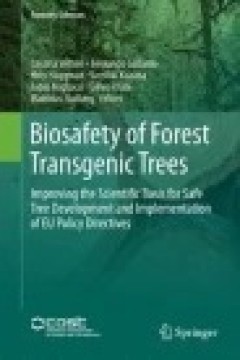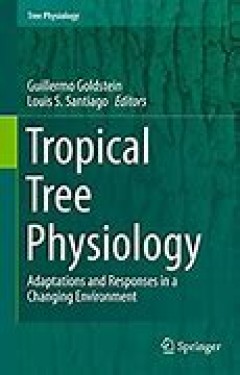Filter by

A Dictionary of the Economic Products of India
A Scottish doctor and botanist, George Watt (1851–1930) had studied the flora of India for more than a decade before he took on the task of compiling this monumental work. Assisted by numerous contributors, he set about organising vast amounts of information on India's commercial plants and produce, including scientific and vernacular names, properties, domestic and medical uses, trade statis…
- Edition
- -
- ISBN/ISSN
- 9781107239142
- Collation
- -
- Series Title
- Cambridge Library Collection - Botany and Horticulture
- Call Number
- -

A Dictionary of Botanical Terms
John Stevens Henslow (1796–1861) was a botanist and geologist. As teacher, mentor and friend to Charles Darwin, it was his introduction that secured for Darwin the post of naturalist on the voyage of the Beagle. While Professor of Botany, Henslow established the Cambridge University Botanic Garden as a resource for teaching and research. Students were encouraged to examine plant specimens car…
- Edition
- -
- ISBN/ISSN
- 9780511701542
- Collation
- -
- Series Title
- Cambridge Library Collection - Botany and Horticulture
- Call Number
- -

Forest Hydrology and Catchment Management
For the last three centuries forests have been recognised as providing the best water catchments and valued for their sustained output of high quality water. In Australia, work which was commenced fifty years ago has come to fruition and is providing new information on forest hydrology issues. The book focusses on the issues of small streams, including catchment definition, slope, hydrograph fo…
- Edition
- -
- ISBN/ISSN
- 978-94-017-9337-7
- Collation
- XIV, 268 hlm.
- Series Title
- -
- Call Number
- -

The Subtropical Vegetation of Southwestern China Plant Distribution, Diversi…
This book provides a wealth of high-quality scientific information on the patterns and processes of vegetation change across a broad range of spatial and temporal scales, concentrating on Southwestern China, mostly on the Yunnan region, and extending to the Yangtze River valley near the boundaries separating Chongqing, Sichuan and Guizhou.
- Edition
- -
- ISBN/ISSN
- 978-94-017-9741-2
- Collation
- -
- Series Title
- -
- Call Number
- -

Wood Characteristics Description, Causes, Prevention, Impact on Use and Tech…
This book offers a broad range of options for technically adapting, handling and processing wood with specific wood characteristics. It starts by discussing wood anatomy and the general factors leading to the formation of wood characteristics. The individual characteristics are then categorized into four groups: 1. Wood characteristics inherent in a tree’s natural growth. 2. Biotically-induc…
- Edition
- -
- ISBN/ISSN
- 978-3-319-07422-1
- Collation
- -
- Series Title
- -
- Call Number
- -

Wildland Fuel Fundamentals and Applications
A new era in wildland fuel sciences is now evolving in such a way that fire scientists and managers need a comprehensive understanding of fuels ecology and science to fully understand fire effects and behavior on diverse ecosystem and landscape characteristics. This is a reference book on wildland fuel science; a book that describes fuels and their application in land management. There has nev…
- Edition
- -
- ISBN/ISSN
- 978-3-319-09015-3
- Collation
- XI, 191
- Series Title
- -
- Call Number
- -

Biosafety of Forest Transgenic Trees
This book provides up-to-date information on the environmental impact of transgenic trees on genetically modified tree (GMT) communication strategy. It is useful to public/private organisations as well as to private and public research bodies and universities worldwide since it reports on the global status of GMT research and policy. A high number of genetically modified trees (GMTs) with alter…
- Edition
- -
- ISBN/ISSN
- 978-94-017-7531-1
- Collation
- -
- Series Title
- -
- Call Number
- 634.9

Short Rotation Woody Crop Production Systems for Ecosystem Services and Phyto…
While international efforts in the development of short rotation woody crops (SRWCs) have historically focused on the production of biomass for bioenergy, biofuels, and bioproducts, research and deployment over the past decade has expanded to include broader objectives of achieving multiple ecosystem services. In particular, silvicultural prescriptions developed for SRWCs have been refined to i…
- Edition
- -
- ISBN/ISSN
- 978-3-03921-510-2
- Collation
- -
- Series Title
- -
- Call Number
- 634 SHO

Tropical Tree Physiology Adaptations and Responses in a Changing Environment
This book presents the latest information on tropical tree physiology, making it a valuable research tool for a wide variety of researchers. It is also of general interest to ecologists (e.g. Ecological Society of America; > 3000 or 4000 members at annual meeting), physiologists (e.g. American Society of Plant Biologists; > 2,000 members at annual meeting), and tropical biologists (e.g. Associa…
- Edition
- -
- ISBN/ISSN
- 978-3-319-27422-5
- Collation
- 54 b/w illustrations, 72 illustrations in colour
- Series Title
- -
- Call Number
- -

The Brazilian Amazon
The aim of this book is to analyse the current development scenario in the Amazon, using Terra Preta de Índio as a case study. To do so it is necessary to go back in time, both in the national and international sphere, through the second half of the last century to analyse its trajectory. It will be equally important analyse the current issues regarding the Amazon – sustainable development a…
- Edition
- -
- ISBN/ISSN
- 978-3-319-23030-6
- Collation
- XXIII, 204
- Series Title
- World Forests
- Call Number
- -
 Computer Science, Information & General Works
Computer Science, Information & General Works  Philosophy & Psychology
Philosophy & Psychology  Religion
Religion  Social Sciences
Social Sciences  Language
Language  Pure Science
Pure Science  Applied Sciences
Applied Sciences  Art & Recreation
Art & Recreation  Literature
Literature  History & Geography
History & Geography